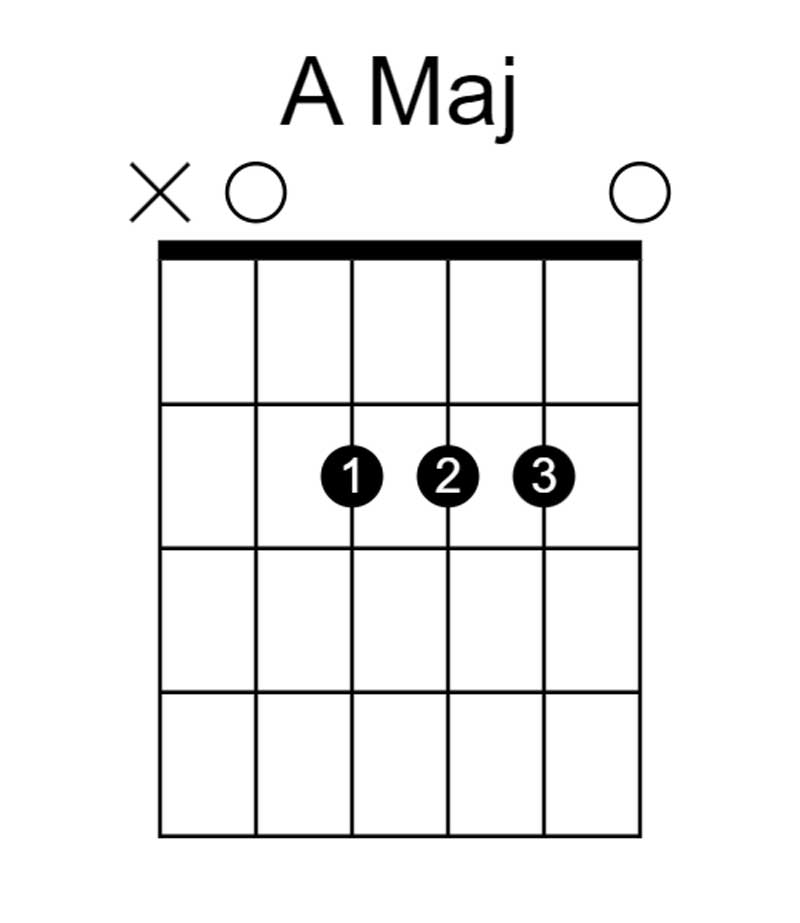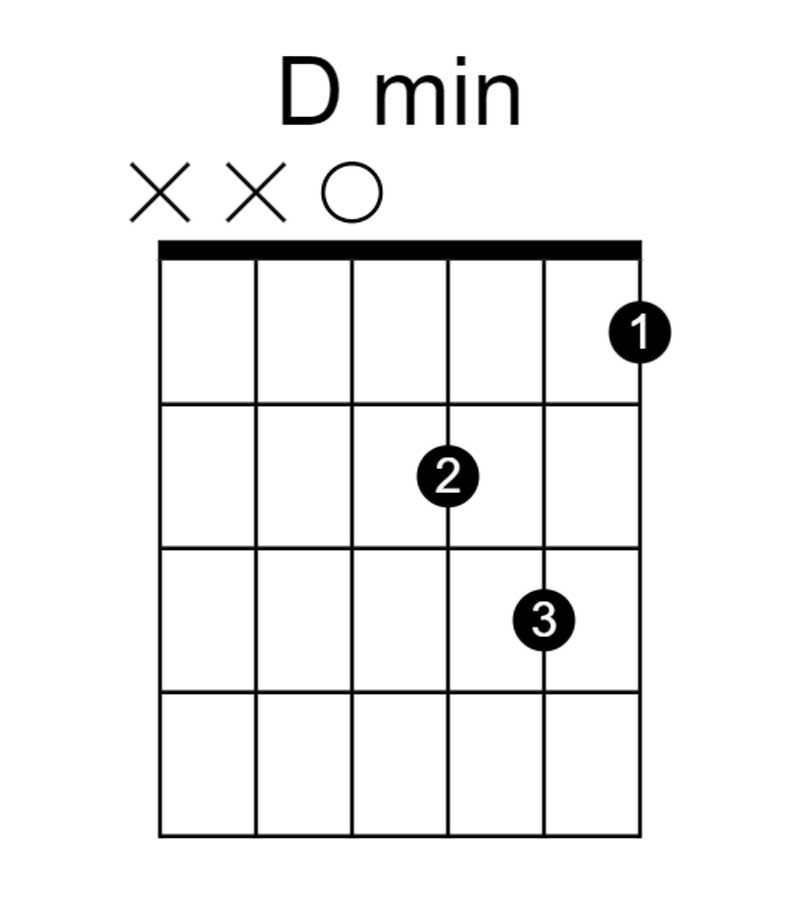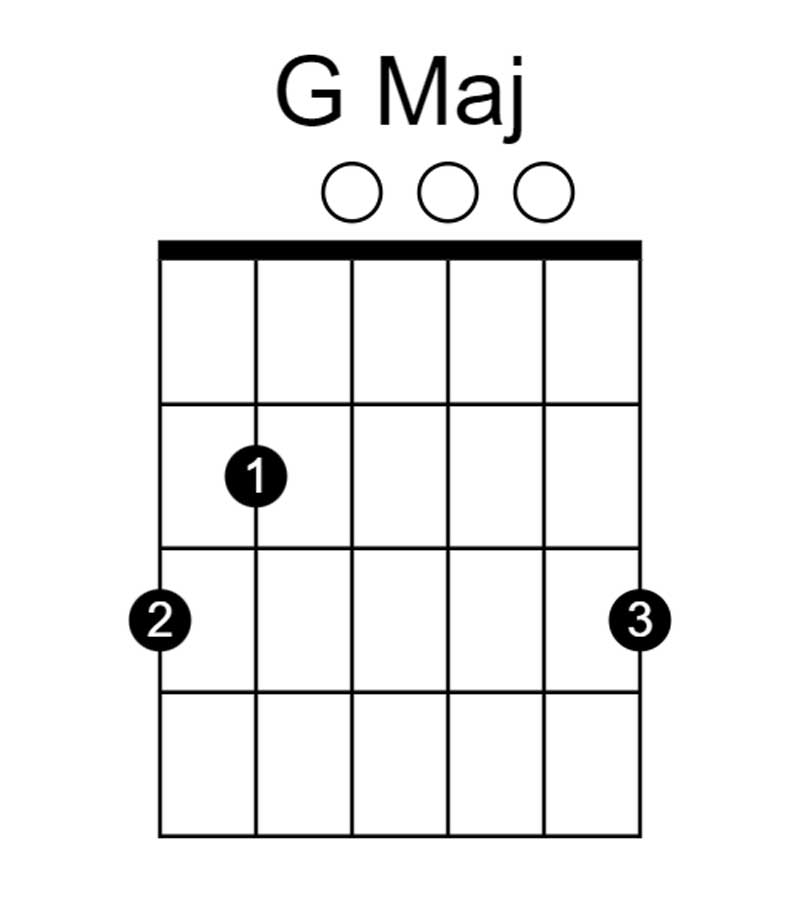Learning a few easy guitar chords for beginners has many pros. If you’re just getting started or want to get playing as soon as possible, then look no further.
After this article you will have the tools necessary to craft some basic guitar chords & build out basic songs so you’re ready to strum away by the campfire.
Not only that, but applying this knowledge will help to build your musical foundation, increase finger strength, and improve your overall dexterity on the guitar.
We hope you learn your first guitar chords here & your confidence grows as you master some important building blocks to your guitar journey.

Minor vs Major: The Difference
A guitar chord is basically a combination of two or more notes that are played simultaneously on the guitar.
They’re important because they allow guitarists to create harmonies and melodies, and to play a wide range of music genres.
Guitar chords give the guitar its distinctive sound and allow for a fuller and more complex sound compared to playing single notes alone.
Major Chord
A major chord is a type of chord that consists of three notes: the root, third, and fifth, with the third note being a major third above the root.
Major chords have a bright and happy sound, and they’re commonly used in all sorts of music genres, including pop, rock, and country. They’re also considered the most essential and basic chords in music theory.
Minor Chord
In contrast to a major chord, a minor chord is a type of chord that is formed by playing the root note, a minor third above the root, and a perfect fifth above the root note.
The minor third is what differentiates it from the major chord, as it creates a melancholic and sad sound.
Minor chords are commonly used in many music genres to express a range of emotions, including sadness, melancholy, and tension.
Unlike major chords, which have a bright and happy sound, minor chords can create a sense of sadness, making them an essential part of a musician’s toolbox for expressing different moods in their music.
5 Basic Guitar Chords
How To Read Chord Diagrams
A guitar chord diagram is a visual representation of a guitar fretboard that shows the finger placement for a specific chord. Here’s a quick rundown on how to read a guitar chord diagram:
The vertical lines represent the strings, with the furthest left string being the low e string (thickest).
The horizontal lines represent the guitar frets & a thick bar represents the guitar nut but is not always visible depending on where the chord is played.
X’s & O’s above the chord chart represent a string being played in the open position (O/no frets pressed) or X meaning that the string is not played at all.
Next is the dots themselves which will let you know which strings & which fret to press down. They will typically have numbers on them but not always. The numbers represent which finger to use as a recommendation. The number 1 represents your index finger, 2 is your middle finger, 3 is your ring finger, and 4 is your pinky.
Finally, if the chord is played above the first few frets, you will see something like “10fr” on the side. This means that this is the starting point of the chord. For example, 10fr meaning that the chord starts on the 10th fret.
E Minor
This is perhaps the easiest of guitar chords.
Simply press the 2nd lowest string at the second fret with your index finger, and then press the string right above it with your middle finger. Finally, strum all of the strings for a rich & full sounding chord.

A Major
This major chord will add a bit of happy contrast to the previous minor E chord.
To play, simply place your index on the second fret of the D string (smallest of the wounded strings). Next, add your middle finger to the string above it, then your ring finger above that one. Finally strum all the strings except the low e string.

A Minor
Try switching between this chord & the previous to hear the difference between major & minor chords.
To play this one, place your index finger on the first fret of the B string. Next, place your middle finger on the second fret of the D string & your ring finger on the string above that one.

D Minor
This one is a bit easier in terms of finger placement but might take a couple tries to keep the bottom 2 strings muted while strumming.
To perform, place your index on the 1st fret of the high e string (thinnest), then your middle finger on the second fret of the g string. Finally add in your ring finger on the 3rd fret of the B string and strum the highest 4 strings.

Related: Easy Ways To Play The Dm Chord!
G Major
The G major chord has a big stretch, but if you can’t pull it off, give it some time or try playing just the bottom 5 strings.
First place your middle finger on the third fret of your low e string. Next, place your index on the second fret of the A string. Now, stretch over with your ring finger onto the third fret of the high e string. Finally, strum all of the stings for a joyous sound.

Tips For Playing Guitar Chords For Beginners
Here are some common problems that beginner guitar players face when playing guitar chords and tips to help solve the issue:
Buzzing or muted strings: This problem occurs when the strings are not pressed down hard enough or are being muted by the fingers.
Solution: Press down on the strings with the tips of your fingers and make sure they are not touching any adjacent strings. If you are still having issues, check out our article on fret buzz.
Difficulty switching between chords: Many beginners struggle with quickly switching between chords, especially when playing in a song.
Solution: Practice transitioning between chords slowly and gradually increase the speed. Use a metronome to help keep a steady tempo.
Pain or discomfort in the fingers: Pressing down on the strings can cause discomfort or pain in the fingertips, especially when first starting out.
Solution: Take frequent breaks and stretch your fingers. Gradually build up your finger strength by practicing regularly.
Strumming technique: Playing chords also involves strumming or plucking the strings with a pick or fingers. Some beginners may struggle with getting the right strumming technique.
Solution: Practice strumming slowly and accurately, focusing on hitting only the strings you want to play.
Difficulty playing barre chords: Barre chords require pressing down multiple strings with one finger, and many beginners struggle with playing them cleanly.
Solution: Practice pressing down with the side of your finger instead of the flat part and gradually build up finger strength. Use lighter gauge strings or lower the action (height of the strings) on your guitar to make it easier.
By practicing regularly and being aware of these common problems, beginners can overcome them and improve their chord playing skills on the guitar.
Learn More About Guitar Chords
Open Chords
An open chord is a guitar chord that contains one or more open strings, meaning they are not pressed down by a finger on the fretboard.
Open chords are commonly used in many genres of music, especially in folk, country, and pop music.
They are often easier to play than barre chords, making them popular among beginners & those who like to play with open d tuning for slide guitar.
Here’s what an open chord looks like:

Power Chords
A power chord is a two-note chord played on the guitar that typically consists of the root note and the fifth interval of a given key.
Power chords are often played on distorted electric guitars in rock and heavy metal music to create a powerful and aggressive sound.
They are commonly used in rhythm guitar playing and the chord shape can be shifted up & down the neck so they are extremely versatile.
Here’s an example of a power chord:

Barre Chords
A barre chord (sometimes called bar chords) is a guitar chord in which one finger is used to press down multiple strings across the same fret, effectively acting as a “bar” that holds down the strings.
Barre chords are commonly used in various genres of music and are an important technique for playing guitar.
They can be challenging to play for beginners as they require finger strength and proper positioning.
However, learning chords of this type can be rewarding as they are also moveable across the entire fretboard & open many doors for your creativity.
Here’s what a barre chord looks like:

Frequently Asked Questions
What is the 1 3 5 rule in chords?
The 1-3-5 rule is a basic principle in chord construction that refers to the intervals (triad) of a major chord.
In this rule, the 1 refers to the root note of the chord, the 3 refers to the third note in the major scale above the root note, and the 5 refers to the fifth note above the root note.
For example, in a C major chord, the 1-3-5 rule would be C (the root note), E (the third note in the C major scale), and G (the fifth note in the C major scale).
This rule can be applied to constructing major chords in any key.
